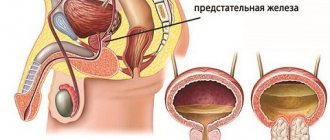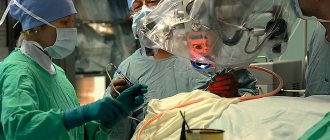Causes of coma
The chances of surviving a coma due to a stroke vary from patient to patient. During coma, apoplexy occurs, which causes increased hemorrhage, and the patient loses the ability to remain in a normal state. It is known that coma is a common consequence after a stroke, after which you can survive only with timely medical care. This is why coma forms:
- the brain swells - against this background, vascular damage, heart attack, and hypoxia develop;
- severe bleeding is the cause of hemorrhagic stroke;
- ischemia – insufficient supply of blood and oxygen, which leads to the death of neurons or their temporary incapacity;
- infectious or autoimmune lesions of the circulatory system;
- angiopathy is a disease that causes the accumulation of blood protein in vessels that block the blood flow;
- atheroma – change, destruction of the walls of blood vessels, loss of their functions;
- severe intoxication - appears due to chemicals;
- callagenosis is a change in connective tissue that causes coma after a stroke.
Some patients believe that only a hemorrhagic stroke can cause coma, but this is not true. Even after an ischemic attack, the chances of survival if a person falls into a coma are greatly underestimated.
Coma develops with ischemic stroke of several forms: atherosclerotic lesions, cardioembolism, lacunar stroke, hemodynamic form of the pathology.
Against the background of hemorrhagic changes in the arteries of the brain, ischemic strokes rarely cause coma. It is also surprising that recovery from a coma after a stroke of this type can occur independently.
Coma after a stroke is the result of an apoplexy, which is accompanied by hemorrhage in the brain, which leads to loss of consciousness.
Main reasons:
- ischemia - poor blood supply to internal organs;
- internal bleeding in the brain that appears with high pressure in one of the areas;
- vascular atheroma;
- brain tumors, resulting in tissue hypoxia;
- collagenoses that disrupt the functioning of capillaries;
- intoxication;
- blood diseases;
- lack of vitamins;
- significant protein deposits in the cerebral vessels.
You can reduce the possibility of a stroke and prolong your life by knowing about the risk factors:
- chronic diseases of the cardiovascular system (timely diagnosis is required);
- arterial hypertension (you will need to keep a daily “pressure log”);
- characteristics of work (for example, with strong nervous stress, stress);
- transient ischemic lesions (the main precursors of heart attacks);
- obesity and high blood cholesterol;
- smoking (negatively affects blood pressure);
- stroke in loved ones;
- diabetes of any type.
The likelihood of the condition also increases: untimely hospitalization, lack of adequately equipped intensive care wards and non-compliance with the rehabilitation course. If first aid is not provided during a major stroke, not everyone will be able to survive more than a day.
In a comatose state, consciousness is switched off, and reactions to external stimuli are completely absent. Coma in older people develops as a result of acute circulatory disorders in the brain, which leads to damage to the central nervous system and changes in the functioning of vital body processes.
The duration of the coma lasts about 2–4 weeks. The outcome directly depends on the reasons that caused it, the severity and location of the damage. When recovering from a comatose state, older people have a high probability of developing physical, psychological, and intellectual pathologies. After regaining consciousness, tests are performed to help assess the patient's health.
The source of coma can be:
- cerebral circulatory disorders;
- diabetes;
- brain injuries and tumors;
- acute renal or liver failure;
- violation of water and electrolyte metabolism in the body;
- stroke;
- intoxication of the body.
Read material on the topic: Diseases of old age: types, causes, symptoms
Prognosis, recovery after coma
Post-stroke coma is considered the most severe type of coma (1):
- only 3% of patients manage to recover and fully recover;
- 74% of comas after a stroke end in death;
- 7% of patients manage to regain consciousness, but they lose all higher functions (the ability to think, talk, perform conscious actions, carry out commands);
- 12% of patients remain deeply disabled;
- 4% of people recover, maintaining moderate impairment.
Factors influencing the forecast:
- Localization of the focus of necrosis. If a stroke affects the medulla oblongata, where the centers for controlling breathing and heartbeat are located, death occurs very quickly.
- Duration of coma: the longer it lasts, the less hope for a full recovery, the higher the risk of death.
- Depth of coma. In medicine, the Glasgow scale is used to assess it. During the examination, the doctor tests a person’s ability to open their eyes when exposed to various stimuli, speech, and motor reactions. For each attribute a certain point is awarded (table). The lower the score, the less favorable the outcome for the patient.
| Reaction | Ball |
| Eye opening when pressed | |
| There is | 2 |
| No | 1 |
| In response to the patient's question | |
| answers inappropriately | 3 |
| makes strange sounds | 2 |
| does not react | 1 |
| When a limb is pinched forcefully | |
| withdraws | 4 |
| bends | 3 |
| unbends | 2 |
| does not react | 1 |
Coma degree (based on total points):
- 6-7 – moderate;
- 4-5 – deep;
- 0-3 – brain death.
Symptoms of coma in older people
The word “coma” began to be used by the Greeks, and it is translated from the ancient language as “sleep”. After all, in this state a person sleeps for a very long time and deeply, but it is impossible to wake him up. Organs in a coma function, but in a slow mode, sometimes requiring the support of special devices. If a person is in a deep coma, then the following condition occurs:
- unconsciousness during the entire time of being in a coma;
- spontaneous bowel movements of the body;
- lack of any response to tactile stimuli, including pain, as well as to sound and light;
- no sleep/wake cycle.
In patients after a stroke, coma progresses differently; some people retain swallowing functions. Tube feeding is not required for this condition. Some even have a reaction to bright light and other actions: unconscious laughter, grimaces, spontaneous movements. However, the person does not understand what is happening, his eyes are usually closed, he does not hear anything.
The condition can occur within a few hours after the stroke. In rare cases, you can suspect that the patient is about to fall into unconscious sleep by certain symptoms: dizziness, severe weakness and drowsiness, vision problems, severe yawning, numbness or paralysis of the limbs, and confusion.
There are several outcomes that can result from coma after a stroke. Firstly, the patient will return from a dangerous condition with (in rare cases, complete) restoration of vital functions. Secondly, death as a result of brain death, which can occur due to severe hypoxia.
Thirdly, a way out of the situation without restoration of functions, with preservation of paralysis and paresis, as well as with impaired memory and intelligence. Fourthly, the transition to a vegetative state with the preservation of limited reactions to stimuli, while the person cannot speak or think.
Proven fact: full restoration of health is possible only in 10% of cases.
How many days a coma lasts during a stroke depends on the characteristics of the patient’s body and the level of brain damage. The condition can go away either within an hour or over a week, but in certain cases the condition can last for several years, or the patient will live like this for the rest of his life.
Signs of a coma:
- delusions, hallucinations;
- incoherent speech;
- weak pulse;
- gagging.
2-3 minutes after the main symptoms, the patient stops responding to any stimuli.
Signs in children
For a long time, in the study of coma during stroke, attention was focused on studying the causes of extensive hemorrhage only in adults. But this issue is also relevant for newborns due to the high mortality rate of infants, while in most children it is almost impossible to determine this condition.
Features of symptoms of strokes in children:
- atypical development of focal neurological symptoms with additional addition of brain disorders;
- manifestation of extensive subarachnoid hemorrhages.
It is difficult to establish the cause of hemorrhage and the lesion site intravitally. Coma due to neonatal stroke is observed in 40% of cases; in other situations it is the development of neurological deficit or death.
- Body temperature. If coma in older people is caused by overheating, it is accompanied by a high temperature of up to 43 ° C and dry skin. In case of poisoning with alcohol or medications, a low temperature of 32... 34 °C is diagnosed.
- Respiratory frequency. Slow breathing is diagnosed in older people in coma caused by a lack of thyroid hormones or poisoning with drugs containing morphine. If the pathology develops against the background of bacterial intoxication, brain tumor, renal failure, diabetes mellitus, then the patient will experience deep breathing.
- Heart pressure and rhythm. In cases where coma in an elderly person is provoked by heart pathologies, a decrease in heart rate is observed. If the cause of the coma is high intracranial pressure, then the patient is diagnosed with a rapid heartbeat in combination with high blood pressure.
- High blood pressure is common in patients in a coma due to a stroke. Low blood pressure is typical for patients in a coma caused by diabetes, poisoning with sleeping pills, extensive internal hemorrhage, or myocardial infarction.
- Color of the skin. The rich red color of the skin indicates that the patient has been poisoned by carbon monoxide. Blueness of the fingertips and nasolabial triangle indicates a lack of oxygen in the blood. If an elderly person in a coma has hematomas, bleeding from the ears and nose, and bruises around the eyes, then this condition has developed as a result of a traumatic brain injury. If there is unnatural paleness of the skin, this may indicate extensive blood loss.
- Contact with others. If an elderly person in a coma or stupor makes involuntary sounds, this is a positive sign, since this ability disappears as the coma deepens.
Read the material on the topic: Medicines for the elderly: 13 tips for taking medications
Stages of recovery from coma after TBI. Traumatic brain injury (coma, acute period)
Classifying coma according to the degree of its depth, we can distinguish the following types of this condition:
- Prekoma. While in this state, the person remains conscious, but there is slight confusion in actions and lack of coordination. The body functions according to the concomitant disease.
- Coma 1st degree. The body's reaction is very inhibited even to strong stimuli. It is difficult to find contact with the patient, but he can make simple movements, for example, turning over in bed. Reflexes are preserved, but are very weakly expressed.
- Coma 2nd degree. The patient is in a deep stage of sleep. Movements are possible, but they are performed spontaneously and in a chaotic manner. The patient does not feel touch, the pupils do not react to light in any way, and respiratory function is impaired.
- Coma 3rd degree. Deep state of coma. The patient does not respond to pain, the reaction of the pupils to light is completely absent, reflexes are not observed, the temperature is low. Disturbances occur in all body systems.
- Coma 4 degrees. A state from which it is no longer possible to get out. The person has no reflexes, the pupils are dilated, and the body is hypothermic. The patient cannot breathe on his own.
In this article we will take a closer look at the condition of a person in a penultimate degree coma.
The longer the unconscious state lasts, the more difficult it will be to get out of it and recover. A 3rd degree coma can occur differently for everyone. The consequences, as a rule, depend on the degree of brain damage, the length of time spent in an unconscious state, the reasons that led to the coma, the health of the organs and age.
Despite the fact that newborns recover from a coma more easily, the consequences can be very sad. Doctors immediately warn relatives how dangerous a 3rd degree coma is. Of course, there are chances of survival, but at the same time a person may remain a “plant” and never learn to swallow, blink, sit and walk.
For an adult, a prolonged stay in a coma is fraught with the development of amnesia, the inability to move and speak, eat and defecate independently. Rehabilitation after a deep coma can take from a week to several years. In this case, recovery may never occur, and the person will remain in a vegetative state for the rest of his life, when he can only sleep and breathe independently, without reacting in any way to what is happening.
Statistics show that the chance of a full recovery is extremely small, but such events do happen. Most often, death is possible, or in case of recovery from a coma - a severe form of disability.
Coma in the 3rd degree is not recognized as an independent disease; it occurs from complications of the nervous system when the nerve pathways are damaged. The brain receives signals using the reticular formation. It serves as a filter that is used to transmit nerve impulses. When its cells become damaged, the brain will have loss of life. As a result, a comatose period occurs.
Damage to nerve fibers occurs physically. For example, in case of stroke, injuries. Chemical causes include the presence of other diseases, as well as incoming external metabolic products. Internal factors are a low oxygen content, acetone components, and ammonia.
External intoxication occurs with an overdose of drugs, sleeping pills, poisons, and the influence of toxins during infections. A special factor is the increase in pressure that occurs with injuries. Treatment is prescribed when the causes of the coma are determined.
Coma is divided into 2 groups: depending on the factors of occurrence and the degree of state of consciousness. Based on the first sign, the disease is divided into:
- traumatic;
- epileptic;
- apoplectic;
- meningeal;
- tumor;
- endocrine;
- toxic.
This distribution of the disease is rarely used, since it does not reveal the real condition of the person.
In resuscitation, the stages of coma are as follows:
- coma 1st degree: also called stupor;
- coma 2: called stupor;
- coma 3: atonic;
- coma 4: extreme coma.
A person can remain in these states for a long period. Patients lie motionless, which is necessarily controlled by the doctor. He must be able to perform various types of procedures. The prognosis for recovery depends on the condition of the body. Depending on the type of condition, different procedures are prescribed.
In a comatose state, the prognosis is determined by the degree of brain disease, as well as the causes. A person who has been in a coma has a chance of improving his condition, based on injuries, age, and medications. In any case, the doctor provides the necessary treatment.
The consequences of a coma can be as follows:
- favorable: when the condition improves and no adverse effects are observed;
- doubtful: both a positive and negative outcome is possible;
- unfavorable: when the patient dies.
Recovery from a coma involves a number of therapeutic measures. They are usually prescribed by a doctor. The procedures consist of taking medications, doing physical exercise, and maintaining proper nutrition. An integrated approach will significantly improve a person’s condition in a short time.
Any condition is easier to prevent than to treat. Prevention involves performing diagnostics, using the necessary treatment methods, and correcting the condition. Thanks to this, you can prevent its occurrence.
Coma is a sharp depression of the functions of all parts of the brain, a desperate attempt to survive due to changes in metabolism. The processes of coma development involve the cortex, subcortex and stem structures.
If, after an accident, a person’s life requires hardware support, and the patient himself has no reflexes and does not respond to pain and other stimuli, a 3rd degree coma is diagnosed. The chances of survival after an accident that leads to this condition are negligible. The prognosis for such patients is disappointing, but there is still a chance of returning to life. It all depends on the degree of brain injury as a result of the accident.
In the case when a 3rd degree coma occurs, the newborn has a chance of survival, but, unfortunately, it is very small. If the baby manages to get out of a serious condition, severe complications or disability are possible. At the same time, we must not forget about the percentage of children, albeit small, who managed to cope with this without any consequences.
Coma is a disorder of human consciousness in which brain damage occurs. A patient in this condition cannot contact the environment. Coma of the 3rd degree is also called atonic. Causes and symptoms vary. Coming out of a coma is possible with the necessary care. Diagnosis is carried out using CT and MRI, laboratory blood tests. Treatment involves eliminating the main cause of the pathology.
There are quite a few known factors that provoke the state of clinical death in childhood. These are respiratory pathologies (pneumonia, smoke inhalation, drowning, blockage of the respiratory system by a foreign body, suffocation), cardiopathologies (heart defects, arrhythmia, severe sepsis, ischemia), central nervous system lesions (seizures, intracranial injuries and hematomas, malignant brain tumors, meningitis) and other reasons (anaphylactic reaction, poisoning).
Coma after a stroke has four degrees of severity, and a person’s condition depends on the severity of the changes that have occurred in the brain, as well as on the specific somatic pathology that led to the development of the stroke.
The mildest stage in which a person retains the ability to respond to strong stimuli. He feels pain, hears and can understand speech, and turn in bed. Consciousness is often confused, the swallowing reflex is not lost, the pupils react to light. There may be some muscle hypertonicity and divergent strabismus. The prognosis is favorable, the person is able to recover with minimal consequences.
The second stage is diagnosed when a person is in a state of deep sleep. Consciousness is depressed, contact with the patient becomes impossible. All reactions are sharply weakened - the person reacts weakly even to strong painful stimuli. Muscle movements, if they occur, are involuntary and chaotic.
Such a coma during a stroke is often accompanied by the development of pathological breathing, and uncontrolled urination or defecation is possible. The pharyngeal reflex remains, but the pupils practically do not react to light, and there are no skin reflexes. Fibrillar muscle twitching or spastic contractions are often observed.
Stage III
The prognosis for survival at this stage of coma is low
Consciousness and reaction to pain are absent, corneal reflexes are lost. The pharyngeal reflexes are preserved, but are greatly suppressed. The pupils lose their ability to respond to light. Muscle tone is greatly reduced, tendon reflexes are practically lost. Convulsions are often observed, which can be localized or generalized. Blood pressure decreases, body temperature drops. The survival prognosis is extremely unfavorable.
Complete absence of consciousness and all reflexes. Mydriasis is almost always observed, hypothermia is critical, deep dysfunction of the medulla oblongata can cause spontaneous cessation of spontaneous breathing. The onset of this stage of coma leaves a person practically no chance of survival.
Severity of coma in older people
- Prekoma. In this state, elderly people experience slow reaction, weakness, confusion, or, conversely, develop psychomotor agitation. Pathologies occur in the functioning of internal organs according to the characteristics of the disease that caused the onset of coma in an elderly person. Reflex reactions remain.
- Coma I degree. The patient begins to develop deafness, and the reaction to stimuli is inhibited. An elderly person in a coma of this degree is able to swallow liquid food and perform simple movements, but it is already quite difficult to establish contact with the patient. Reflex reactions are inhibited or exaggerated depending on the type of coma.
- Coma II degree. In this state, the patient experiences deep sleep, sometimes uncontrolled movements of the limbs appear, and contact is impossible. An elderly person in a coma experiences pathological noisy breathing, arrhythmia, and involuntary emptying of the bladder and intestines. There are no reflex or pupillary reactions, skin sensitivity does not appear.
- Coma III degree. Patients lack consciousness, pain sensitivity, reflex reactions, and the pupils are dilated. An elderly person in a coma experiences a decrease in body temperature, depressed breathing and a drop in blood pressure.
- Coma IV degree. Patients are diagnosed with complete impairment of consciousness, absence of reflex reactions and muscle tone, decreased body temperature and blood pressure, sudden stops in respiratory movements, which requires connecting the patient to a ventilator.
Read material on the topic: Life after 80 is just beginning
Signs of 2nd degree coma
The stuporous state (coma of the 2nd degree) is caused by a deeper damage to the central nervous system than with stupor (coma of the 1st degree). The patient occasionally makes movements, but their coordination is greatly impaired. Breathing is pathological, noisy. There are no cutaneous reflexes, but the corneal and pharyngeal reflexes are preserved. Patients experience involuntary urination and bowel movements. Pathological muscle contractions are noted.
Characteristic features:
- Lack of skin reflexes.
- Loss of speech perception of the doctor and loved ones.
- A sharp decrease in pain sensitivity.
- Development of pathological types of breathing: Cheyne-Stokes, Kussmaul.
- Decreased reaction to pupil light.
- Muscle incoordination, chaotic movements.
- Involuntary defecation and urination.
Stage 2 coma is similar to deep sleep. Breathing, as a rule, is stertorous, the sound resembles snoring - the cause of the development of pneumonia and sputum discharge, as well as disruption of the innervation of the muscles of the velum. Nerve fibers coming from the centers of the brain approach the soft palate. They provide muscle tone. In a comatose state of the second degree, these muscles lose tone, resulting in snoring.
Other types of pathological breathing are possible:
- Cheyne-Stokes type disorder is characterized by superficial movements of the chest, which gradually deepen and become more frequent, becoming as deep as possible in 5-7 respiratory movements. The cycles repeat. This disorder of respiratory function is caused by damage to the respiratory center in the medulla oblongata, reducing its sensitivity to hypoxia. However, upon reaching a critical level of carbon dioxide in the blood, the respiratory center sharply increases activity, leading to deepening and increased breathing. Deep breaths promote hyperventilation and sharp inhibition of the respiratory center of the brain, which leads to shallow breathing and a change in cycle.
- Kussmaul breathing in second-degree coma is caused by diabetic ketoacidosis and fasting. It is characterized by deep respiratory movements provoked by overexcitation of the respiratory center of the medulla oblongata by the breakdown products of fatty acids.
In a second-degree coma, unlike the first, the patient is not able to perceive people’s speech, since inhibition occurs in the cerebral cortex. Pain sensitivity decreases, the patient may respond to pain with pathological extension or flexion.
The patient's pupils are constricted if the coma is not caused by poisoning with barbiturates and anticholinergic drugs. The reaction to light is inhibited and weakened, its desynchronization is possible, i.e. one of the pupils reacts more slowly.
There is a corneal reflex, in which, in response to irritation with a piece of cotton wool on the cornea above the iris, the patient's eyes close. The pharyngeal reflex is also preserved. When the spatula touches the soft palate, a spasm occurs, corresponding to the gag movement.
Pyramid signs appear, which are a sign of damage to the conductive motor pathways - efferent fibers. Spastic contraction of individual muscle groups and dyssynergia of the patient's rare movements are possible. It should be noted that motor function is sharply weakened compared to a first-degree coma. Among the motor symptoms of stupor, hormeotonia occurs, characterized by flexion of the arms and extension of the legs.
Stages of development
Doctors distinguish 4 stages of coma in a person:
- First. Lethargy or loss of consciousness, reflexes are preserved. This is a mild brain injury with mild depression of the central nervous system. Muscle tone is activated, and weak skin reactions are noted.
- Second. The stage is expressed by the patient falling into an unconscious state, there are no skin reflexes and painful sensations.
- Third. It is expressed by extensive hemorrhage in the brain, coma occurs instantly, almost all reflexes are absent.
- Fourth. The most severe stage, characterized by lack of breathing, a significant decrease in blood pressure, and no reflexes appear. At this level of coma there is almost no chance of survival.
Probability of survival after a stroke
A stroke is a disruption of the blood supply to the brain. It happens for two reasons. The first is blockage of blood vessels in the brain, the second is bleeding in the brain.
One of the consequences of cerebrovascular accident is coma (apoplectiform coma). In case of hemorrhage, a 3rd degree coma may occur. The chances of surviving a stroke are directly related to age and the extent of the damage. Signs of this condition:
- Lack of consciousness.
- Change in complexion (becomes purple).
- Loud breathing.
- Vomit.
- Trouble swallowing.
- Slowing heart rate.
- Increased blood pressure.
The duration of the coma depends on a number of factors:
- Coma stage. In the first or second stage, the chances of recovery are very high. With the third or fourth, the outcome is usually unfavorable.
- Condition of the body.
- Patient's age.
- Equipping with necessary equipment.
- Patient care.
Prognosis and chances of survival
A person falls into a coma not only during a stroke, but also during a heart attack. Rehabilitation and prognosis of coma after a stroke depend on age, the degree of damage to brain tissue, which is determined using the Glasgow Coma Scale, and the cause of the development of this condition. Sometimes recovery from a coma occurs independently, and the patient returns to normal life. In other cases, serious complications occur in the form of brain disorders and heart disease.
Despite the fact that the patient may be in a coma or in a state of minimal consciousness, the development of motor functions is required, although the exercises can only be passive. These exercises help maintain the full range of joint mobility, so that after waking up a person can, without suffering from contractures, stand on his feet or grasp an object with his hand.
Another common consequence is aphasia, a disruption of the speech apparatus. In this case, the victim cannot speak clearly and understand speech. People with aphasia often do not understand this condition and exhibit negative emotions because others cannot understand them.
After recovery, memory loss is not a rare problem. The patient does not remember what happened to him, what happened immediately after the cerebral hemorrhage. Confusion is often noted when a person does not understand where he is and in what place he is.
Help in this case is aimed at restoring memory and speech apparatus. Classes are conducted by an occupational therapist, neurospeech therapist, physiotherapist, rehabilitation psychologist, psychiatrist, neurologist.
Often, a coma during a stroke is diagnosed upon the arrival of an ambulance and requires urgent resuscitation measures.
If a person falls into a coma after a hemorrhagic stroke and without appropriate treatment, the mortality rate will be high.
It should also be taken into account that there is a risk of recurrent hemorrhage in 5% of patients within 3-5 days after a stroke, in 3% of patients - after 4 months, so relapse can only be avoided with surgery.
To relieve the symptoms of coma, resuscitation measures are used, which also includes surgical intervention, which allows you to quickly and effectively remove the patient from this state.
During the operation, bleeding is eliminated and the aneurysm that caused the symptoms of stroke is clipped.
With the sudden onset of coma, the patient loses consciousness, does not wake up for more than 6 hours, and the symptoms increase. This can lead to brain death.
To clarify the diagnosis of the disease, an additional encephalogram is performed.
But in some cases, patients may wake up months or years after falling into a coma. E
This happens only in 9% of cases and is associated with the implementation of unexplored brain reserves. The younger the patient who falls into a coma, the greater the chance of recovery.
The chances of recovery from a coma in older adults depend on the degree of brain damage. In medicine, the probability of recovery from this state is assessed as follows: precoma and coma of the first degree - favorable, complete rehabilitation without consequences is possible; coma of II and III degrees – doubtful, there is a high probability of both recovery and death; Coma IV degree - unfavorable, high probability of death.
The main cause of death during coma in older people is concomitant diseases, for example, diabetes mellitus or pathologies of the cardiovascular system.
Timely provision of medical care and selection of medications also plays an important role. An elderly person in a coma is often prescribed quite simple therapy due to the high cost of drugs, since older patients do not always have the opportunity to pay for all the necessary medications.
Older people have a 59% chance of emerging from a coma in the first two days after a stroke, 89% by the seventh day, and 96% by the ninth day. On average, a patient is in a comatose state for 24 days.
Waking up from a deep coma in older people occurs early. It occurs on days 7–9. At first, the patient may experience difficulty breathing and wheezing. Reconstructing the history of awakening after coma, especially in patients after stroke, is useful in counseling families.
Unfortunately, most elderly people in a coma die within the walls of the hospital. Some patients "wake up" and leave the medical facility, but subsequently lose consciousness and die. A person may also develop secondary infections while in the hospital. It should be noted that awakening from a coma is an important, but at the same time, weightless indicator for complete recovery.
The article uses materials from Wikipedia.
What happens to a person in a comatose state?
At the severe (3rd) stage, the patient cannot be awakened; he does not respond to various stimuli. A person's pupils constrict, there is no pain, only swallowing and breathing reflexes remain. Involuntary discharge of urine and feces is often observed.
The prognosis is influenced by the course of the stroke and the associated causes of this condition. The risk of death depends on the following factors:
- prolonged spasms of the limbs - more than 4 days;
- the coma appeared after repeated hemorrhage;
- death of brain tissue;
- no reactions to pain;
- elderly age.
The state of a person in a coma after a stroke can be determined using MRI, CT, and blood tests. During ischemic hemorrhage, there is a chance of returning to normal life. If this is a hemorrhagic lesion - death occurs within a day - edema destroys all parts of the brain.
In the deep stage of coma, the patient cannot be awakened or react to various stimuli.
He has no reflexes, his pupils are constricted, do not react to light, and there is no reaction to painful stimulation.
Sometimes there is involuntary urination and defecation.
Only basic reflexes (swallowing, breathing) are preserved.
The prognosis is influenced by the severity of the stroke, as well as the accompanying factors that put the person in a coma.
The risk of death is determined by the following indicators:
- coma occurred after a second stroke;
- duration of limb spasms is 2-3 days;
- the patient's age is about 70 years;
- lack of response to sounds, pain and handling;
- death of brain cells.
The picture can be clarified using blood tests, magnetic resonance and computed tomography. With ischemic hemorrhage, there is a good chance for the patient to recover.
In case of coma after a hemorrhagic stroke, the prognosis is disappointing - death occurs within 1-2 days - cerebral edema destroys the main part of its areas.
Coma after a stroke: chances of survival
Intracerebral hemorrhage (ICH) carries high risk, mortality and disability from stroke. Given the lack of effective treatments for ICH, families and physicians use assisted rehabilitation techniques based on the prognosis of stroke patients awakening from coma.
A number of clinical scales exist to predict the odds of surviving coma after stroke, ranging from initial assessment of in-hospital and 30-day mortality, functional outcome at hospital discharge, and 1, 3, and 6 months after ICH. Intensive care units (and neurology units) care for the most severe cases of ICH, especially when patients are comatose. In this acute setting, family members constantly ask whether the patient will wake up. Short-term prognosis, in addition to expected mortality and functional outcome, is often the deciding factor for initial decisions. In a comatose patient, this short-term prognosis is most clearly characterized by restoration of consciousness.
Hospitalized ICH patients with a baseline GCS score of ≤8 have a median length of hospital stay of 10 days. 53% awaken in hospital and 47% remain comatose at the time of death or upon discharge from hospital. In univariate analysis, subjects were more likely to awaken if they had a smaller ICH volume. Apart from glucocorticoid drugs (GCP), no drug interventions or surgery have any effect on patients.
Patients who remained comatose after 24 hours suffered from mental disorders significantly more often than those who woke up (54 vs. 15%). Patients in whom treatment was withdrawn or reduced had severe consequences.
In multivariate analysis, a higher rate of GC use was associated with a higher likelihood of awakening from coma, whereas ICH volume was not associated with awakening. This model had excellent ability to distinguish which patients would wake up and which would remain comatose.
Why does the patient fall into a coma?
Coma after a stroke is a consequence of a decrease or cessation of blood flow in some areas of the brain, so the patient plunges into an unconscious state with a partial loss of reflexive reactions.
There is an acute violation of cerebral circulation with rupture of blood vessels and hemorrhage in the brain (hemorrhagic stroke) and a violation of cerebral circulation with damage to brain tissue, its dysfunction due to difficulty or cessation of blood flow to one or another department (ischemic form of pathology).
The following factors are identified that lead to coma:
- cerebral bleeding with high blood pressure;
- insufficient blood supply to one or more internal organs;
- swelling of the brain due to hormonal imbalance and low oxygen content in the body or individual organs and tissues;
- degeneration of the walls of large vessels;
- intoxication of the body;
- systemic pathology, characterized by the destruction of connective tissue and a progressive course, when the development of the disease is based on an immunopathological process that disrupts collagen metabolism (collagenosis);
- avitaminosis;
- various blood diseases.
Patient care
Once in a coma after a brain stroke, a person requires constant care. First of all, he needs trained medical staff.
The patient needs to be fed regularly and measures to prevent the occurrence of bedsores must be provided. In a coma, the patient does not feel anything and is not capable of movement, therefore, without taking preventive measures, bedsores are sure to appear.
The patient must be protected from infection and maintained in physical condition. Medical care includes providing the patient with the necessary vitamins and microelements.
Exercise therapy after a stroke is the best method of rehabilitation. We have selected sets of exercises to restore all body functions. What dangers are fraught with perinatal encephalopathy - details of treatment and prevention of the disease in children.
The patient requires constant daily care. Lack of consciousness does not allow a person to control all life processes. It is impossible to control the well-being of this patient. The chances of surviving a coma after a stroke depend on proper care.
It is necessary to monitor the cleanliness of bed linen. To avoid the formation of bedsores, you need to place a film wrapped in fabric under the sheet. The patient should not lie in one position for a long time; the person should be carefully turned onto different sides 2-3 times daily.
Care also involves performing the following activities:
- you need to thoroughly wash and dry the skin, especially in intimate areas, in women - in the décolleté area. The skin must be treated with special preparations to prevent bedsores;
- treat and moisturize the nasal and oral cavities daily;
- carefully monitor the intake of medications prescribed by the doctor;
- Perform constant monitoring of bowel movements and urination, and use an enema if necessary;
- constantly monitor the patient’s skin color and breathing;
- measure pulse.
In addition, there are often cases that require special care:
- To prevent the mucous membrane of the eyes from drying out, apply damp cotton pads to the eyelids. This is required if the pupils are slightly open and there is no blink reflex;
- a patient in a coma sometimes experiences vomiting. To avoid vomit getting into the respiratory system, you need to turn your head to the side and slightly raise it. After vomiting, the oral cavity is treated with a sterile napkin.
Treatment tactics are aimed at maintaining the patient’s vital functions. The following medications are used:
- vitamins – support vital energy;
- diuretics – reduce swelling of the brain;
- drugs to normalize temperature;
- detoxification compounds – to remove toxic substances from the body;
- anti-inflammatory drugs - required to prevent recurrent disease.
Mostly symptomatic treatment is provided.
Therapy for coma involves proper nutrition. If swallowing reflexes are present, you need to carefully feed easily digestible high-calorie foods, for example, kefir, broth, pureed soup, boiled eggs. You also need to watch your drinking.
Coma due to hemorrhagic stroke does not have clear time boundaries, so it is impossible to make predictions. But medical care is important while the patient is unconscious.
Nutrition
Food should be liquid, because... it enters the stomach through an inserted tube. Children's milk formulas and fruit purees prepared at home are common.
Hygiene
It is important to monitor the cleanliness of the patient’s body: daily cleanse the skin of sweat with a soap solution, brush your teeth with gauze soaked in soda. It is necessary to comb your hair and wash your hair at least once a week.
Therapy
A person in a coma after a stroke needs artificial ventilation.
It is necessary to remove the hematoma inside the brain, because... Such surgery increases the chances of recovery.
The following medications are prescribed:
- chemicals and medications that inhibit the activity of the blood coagulation system and prevent the formation of blood clots (anticoagulants);
- neurometabolic stimulants are drugs intended to provide a specific effect on higher mental functions (nootropics).
Patient care and treatment
People in a coma need medical supervision and good care. The condition is observed in specialized neurological departments, where, if life-support functions are impaired, the patient is connected to artificial ventilation. Body parameters are recorded on the monitor, anticoagulants and nootropic drugs are prescribed.
Patients are fed through a specially installed tube. Liquid food, ground in a blender, is recommended.
Hygiene must be maintained; the patient's skin must be treated with special products to prevent bedsores. The oral cavity is cleaned with a damp cloth, the hair is washed regularly and combed daily. The patient needs to periodically change body position.
Reference: The dynamics of recovery processes after a stroke will be characterized by ups and downs. It is necessary to believe in a good result and not stop rehabilitation measures.
Clinical picture
There are the following signs of coma during a stroke:
- Prolonged stay in an unconscious state.
- Insufficient brain activity.
- Uneven breathing.
- The pulse is difficult to palpate.
- Weak heart rhythm.
- Hypotension.
- Lack of response to various kinds of stimuli.
- Involuntary urination and bowel movements.
The clinical picture is individual in each individual case. It all depends on the degree of brain damage and the general condition of the internal organs.
Consequences of coma
The longer the unconscious state lasts, the more difficult it will be to get out of it and recover. A 3rd degree coma can occur differently for everyone. The consequences, as a rule, depend on the degree of brain damage, the length of time spent in an unconscious state, the reasons that led to the coma, the health of the organs and age. The younger the body, the higher the chances of a favorable outcome. However, doctors rarely make a prognosis for recovery, since such patients are very sick.
Despite the fact that newborns recover from a coma more easily, the consequences can be very sad. Doctors immediately warn relatives how dangerous a 3rd degree coma is. Of course, there are chances of survival, but at the same time a person may remain a “plant” and never learn to swallow, blink, sit and walk.
For an adult, a prolonged stay in a coma is fraught with the development of amnesia, the inability to move and speak, eat and defecate independently. Rehabilitation after a deep coma can take from a week to several years. In this case, recovery may never occur, and the person will remain in a vegetative state for the rest of his life, when he can only sleep and breathe independently, without reacting in any way to what is happening.
Statistics show that the chance of a full recovery is extremely small, but such events do happen. Most often, death is possible, or in case of recovery from a coma - a severe form of disability.
Introduction to induced coma
Stroke and coma are often accompanying conditions, but sometimes there is a necessary relationship in order to save the patient’s life. Drug induction into a coma is practiced to exclude changes in areas of the brain.
It is important to consider a number of such features:
- An induced coma is appropriate when it comes to pressure on brain tissue and swelling due to hemorrhage. This way you can replace anesthesia during a critical period.
- Reducing pain sensitivity (analgesia) promotes constriction of blood vessels and reduces the tension of cerebral blood flow. The death of brain cells can be avoided.
- Immersion in deep sleep occurs due to the intravenous administration of drugs that act as a depressant on the central nervous system.
- Sedation requires constant monitoring of the patient's clinical parameters. Any reactions (for example, to a light stimulus) indicate the return of consciousness. Therefore, it is important for doctors to provide timely assistance when the patient comes out of a coma.
- Introduction to an artificial coma is accompanied by adverse reactions, which are expressed by impaired respiratory function (tracheobronchitis, pneumonia), renal failure, and pathologies of the nervous system.
Introduction to an artificial sleep state is necessary for medical reasons. Most often this occurs in the presence of dangerous, active changes in the structures of the brain: edema, compression, extensive hemorrhages. Artificial immersion in sleep replaces anesthesia during a crisis, constricts blood vessels and cerebral flow. With its help, it is possible to prevent tissue death and reduce the amount of administered drugs in intensive care settings.
After an induced coma, as soon as the condition has stabilized, the medical staff does their best to help the patient get out of the state, restoring the functioning of the organs.
Coming out of unconscious sleep at any age takes some time; it does not happen that a person wakes up unexpectedly and suddenly. First, the first signs of reflexes appear, then consciousness returns. This may take several days or even weeks. Once all functions have been restored, the complex rehabilitation process begins. The chances of survival if 3-4 days have passed after waking up increase significantly.
How to recognize an approaching coma
After a stroke or heart attack, people can often fall into a coma, especially the elderly, but patients often ignore the signs that appear.
After emerging from deep sleep, the approach of coma is expressed by the following symptoms:
- frequent yawning;
- dysfunction of the speech apparatus;
- rapid pulse;
- constant dizziness;
- paresthesia and numbness of the limbs;
- pale skin color.
To avoid hemorrhage and sudden stroke, it is necessary to observe the prevention of this pathology. To do this, you need to take your health seriously and maintain a healthy lifestyle. You also need to know the first symptoms of the disease and, if they develop, immediately seek medical help.
After a cerebral stroke, coma often appears, especially in older people, but its signs are ignored by the patient.
After recovering from unconsciousness, a person may remember the following symptoms:
- speech disorder;
- yawning;
- severe dizziness;
- rapid breathing;
- pallor;
- paresthesia with numbness or tingling in some parts of the body.
To avoid being in this condition, you need to take preventive measures to prevent a stroke from occurring.
To prevent pathological processes from appearing in brain cells, you need to take your well-being seriously and lead a healthy lifestyle.
You should also remember the signs of the onset of the disease and, if they appear, immediately seek medical help.
Basically, coma is a consequence of a vegetative state. The patient's recovery depends on the cause, location, severity, and extent of brain damage.
How to bring a person out of a coma
Coming out of a coma after a stroke can take a long time. Complete restoration of all functions after a person awakens is impossible and depends on the degree of the disease.
The patient and his relatives must prepare themselves for the long work of his rehabilitation.
During a stroke and further coma, some brain cells are destroyed. Even with a small percentage of their death, important functions of the body are lost.
The goal of rehabilitation is to transfer these functions to other parts of the brain. This is possible with the help of daily classes and exercises that will gradually become more difficult.
Memory loss or confusion may occur. The victim gets to know all his relatives again, gradually restoring his habits and skills (he learns to eat and walk, brush his teeth).
Relatives should facilitate the rehabilitation process by caring for the patient.
The patient must lead a healthy lifestyle to protect himself from another stroke.
First, the patient develops corneal and pharyngeal reflexes, skin reflexes, and muscle reactions. After this, speech and consciousness are restored, but delusions, hallucinations and clouding of reason are possible.
Coming out of a coma after a stroke consists of the following stages:
- The swallowing function is weakly expressed, the skin and muscles begin to react to external stimuli. The patient can move his head, arms and legs. In this case, the doctor records the positive dynamics of clinical symptoms.
- The patient experiences hallucinations, consciousness gradually returns, cognitive processes are restored, speech and vision partially function.
- The return of motor activity is observed: the patient can sit, rises a little, but does not walk without assistance.
When a person comes out of a coma, it is necessary to conduct a tomographic study to identify the affected areas of the brain in order to determine a treatment program.
Someone who has come out of a coma needs psychological support, because... he cannot return to his usual activities and lifestyle, which creates additional stress.
It is necessary to bring a person out of a coma sequentially, because a stroke could lead to the destruction of brain cells, which is accompanied by the loss of functions important for life. To avoid the spread of destruction to other parts of the brain, competent rehabilitation is necessary, including physical exercises with a gradually increasing level of difficulty.
It is recommended to come out of a coma surrounded by loved ones who can morally support a sick family member.
Coming out of a coma
The process of coming out is not like waking up. The first symptom is that the patient opens his eyes and keeps them open for some time. So far he does not respond to voice or touch. The patient's gaze is usually not focused, he looks somewhere into the distance. Chaotic movements of arms and legs are possible.
As the person improves, he begins to “wake up” from pain (for example, a pinch or touch). Movements become more purposeful. For example, the patient may try to pull out the catheter. Unfortunately, sometimes this is the maximum result that can be achieved.
Stable improvement is said to occur if a person begins to respond to being called by name and becomes able to follow simple instructions (shake a hand, move a leg). If everything goes well, the patient's condition will continue to improve. He can begin to recognize those around him, carry on a conversation, fulfill requests, and become interested in what is happening. Further recovery depends on the severity of brain damage due to stroke or coma.
Consequences and prognosis
If a coma is observed with an extensive lesion with cerebral hemorrhage, then it is difficult to predict the timing of recovery from the unconscious state. In this case, it is important to take into account the presence of surgical intervention and the individual characteristics of the body.
With an ischemic stroke, a person can remain in a coma for no more than a day, which is due to the fact that the area of brain damage is not as large as in the hemorrhagic form of the attack.
If brain cells are not saturated with oxygen for more than 30 days, then it is almost impossible to bring a person back to life. We are talking about maintaining vitality through special medical equipment, because... euthanasia is prohibited in Russia.
Chances of Survival
If there is a coma after a stroke, the chances of survival are minimal, but the patient's age plays a big role. The probability of survival is quite high in patients with ischemic stroke. A more accurate prognosis can be obtained using laboratory blood tests and tomography.
Death occurs within 3 days after entering a comatose state. They do not live after a coma if the following factors occur:
- repeated attack that led to coma;
- lack of response to sound and light stimuli, pain;
- age category over 65 years;
- decrease in serum creatinine to a critical level - 1.5 mg/dl;
- extensive lesions of brain tissue;
- death of brain cells.
It is important to take into account concomitant chronic disorders and the desire to live of the patient himself.
Consequences of coma
The results could be:
- recovery from coma followed by complete or partial restoration of impaired functions;
- exit from a coma without restoration of lost functions: paralysis and paresis persist, memory and intelligence are impaired;
- transition of the patient into a vegetative state: the person is conscious, but is not able to think, react to external stimuli, or speak;
- brain death as a result of hypoxia and death.
Health after even a mild coma can be fully restored only in 10% of cases.









